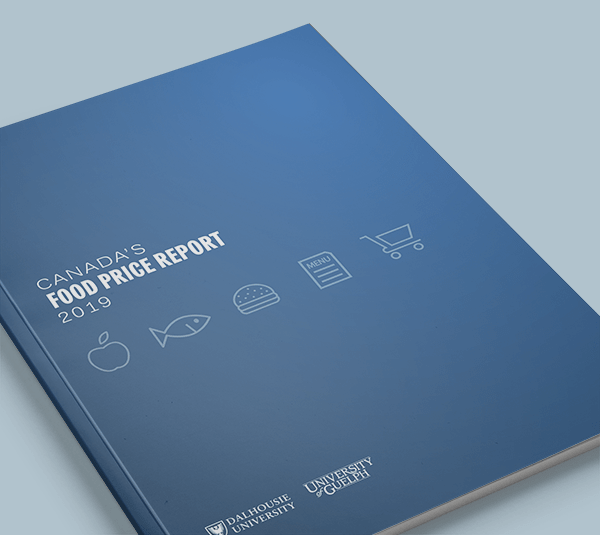
Know Your Customers: Catering to Students, Seniors and Everyone In-Between

Know Your Customers: Catering to Students, Seniors and Everyone In-Between
By Angela Altass
Knowing your customers well and having in stock the items they need and desire can make a big difference in the overall success of any business. Keeping up-to-date on trends and the shopping habits of Canadians can help convenience stores fulfill this task.
For example, an online survey in November 2018 by Dalhousie University looked at consumer perceptions of the grocery shopping experience. Using information from this survey, Canada’s Food Price Report 2019, a collaborative effort between Dalhousie University and the University of Guelph, notes that Canadian consumers appear to be visiting more food stores regularly but spending less time per visit. Survey respondents reported visiting, on average, 2.3 different grocery stores on a regular basis, and shopping 5.4 times per month.
“This could be an indication that consumers are gravitating to other grocery formats, such as convenience stores,” states the report.
When seeking to entice students and younger consumers to your store, there are some specific things to keep in mind.

“Younger consumers are more informed than ever about health, animal welfare, and the environment,” states the report, which also references their rise in interest towards plant-based proteins. “Sixty-three per cent of vegans and vegetarians in Canada are younger than 38 years of age. By 2050, there will be more than 10 billion people on the planet, and while people will still be eating animal protein, plant-based proteins that are more sustainably produced are a promising alternative.”
When catering to the modern consumer, there are a lot of considerations to ponder.
“In today’s world, many factors shape food decisions: natural environment, animal welfare, product origins, human health and packaging all take up room in the decision matrix of the consumer,” says the report.
Interest in food delivery apps and meal kits is increasing, says Dr. Sylvain Charlebois, senior director, Agri-Food Analytics Lab at Dalhousie University.
“We believe that over $5 billion worth of food in Canada is sold online, whether it’s through a store, food app, or meal kit provider,” says Charlebois, “that amount is too large to ignore. If you want to play a role, you can either specialize and remain at the mercy of your address or consider e-commerce. If your address becomes a problem and your costs to maintain your location are increasing, you might want to think of ways to expand your market and capitalize on e-commerce.”
Charlebois does realize, however, that this might not be possible for every store to do.
“For some, e-commerce is not a good fit,” he notes. “If you are in a cute little neighbourhood in Montreal or Toronto and your store is all about the experience, then I’m not convinced that e-commerce is a good fit for you. For other convenience stores, they absolutely should look at offering delivery services, if they don’t already offer it. Service is important, and execution of service is equally as important. The younger generation is much more attracted by e-commerce than older generations.”
Charlebois feels that business is going to change for convenience, and other stores, moving forward, as more consumers start to see online shopping as a convenient way to shop for themselves and their loved ones.
“I think the shopping habits of students and seniors are completely different,” he notes. “Students have grown up with the Internet, and one can expect that they see it as a different space for consumption than the older generation.”
David, a college student in Markham, Ontario, who also works part-time, says that online shopping does play a role in his busy life, and he uses his nearby convenience store to fill in the gaps.
“My girlfriend and I order our groceries online and have them delivered, but, for example, the milk and bread we ordered this week didn’t arrive in the order, so we went to the convenience store to buy those,” he notes. They often also pick up some extras, such as snacks or lottery tickets, while they are at the convenience store.
The condition of the convenience store makes a difference in the decision to shop there, says David. A recent renovation to his local convenience store has left it with a cleaner and more organized appearance, which left these millennials feeling more comfortable shopping there.
On the opposite end of the age spectrum, seniors are contributing to a significant and growing segment of the marketplace, notes a 2012 Agriculture and Agri-Food Canada report Market Opportunities for Foods with Added Health Benefits for an Aging Canadian Population. The report indicated that approximately nine million Canadians will be over the age of 65 by 2031.
Carrying food products that have healthier properties, whether it be lower sodium or reduced fat, could draw the attention of seniors and millennials alike as they are both interested in functional foods, some to follow the advice of their doctors regarding health concerns and others just to enhance overall health improvement.
Along with gathering knowledge on how the average Canadian shops, you might need to delve a bit deeper to really get to know the customers who are walking through your doors. The province in which your store is located can also play a role in consumer shopping habits.
“There are a multitude of factors that influence the way we shop and what leads us to make a purchase,” states Nielsen’s 2018 Purchasing Behaviour Characteristics Across Canada. “Ontarians make fewer shopping trips and spend four per cent less than the average Canadian. Comparatively, their Albertan counterparts spend the most.”
One size does not fit all when it comes to shoppers across the provinces, notes Nielsen.
“Marketers can improve the effectiveness of their efforts if they develop and implement strategies that align with each region’s distinct consumer shopping habits and preferences,” it says. “Consumers in Quebec shop less in mass merchandisers than the rest of the country. Quebec households have fewer members, which likely has a direct impact on the number of shopping trips and dollars spent. Compared to their neighbours to the west, Quebec households have fewer children. In fact, 79 per cent of Quebec households have no children, compared with 69 per cent in Ontario.”
Gathering information, staying in tune with industry news, and even asking questions to your regular customers are all good ways to seek out the details needed to know how to cater to your specific clientele.
As the world responds to the COVID-19 crisis and when business eventually attempts to return to a more normal condition afterwards, knowing your customer is more vital than ever. Making the connection to what they need and being a source of reliability within the relationship with them could be paramount to your success and sustainability. Making a strong effort to know your customers is an overall good business practice to follow.


































